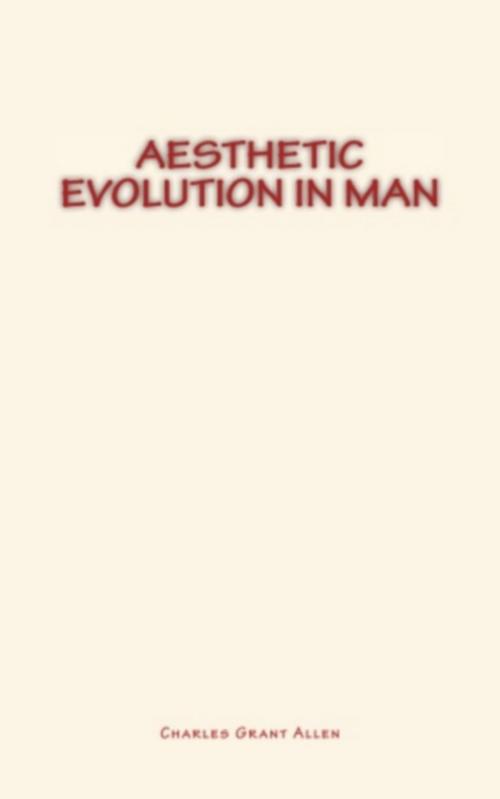| Author: | Charles Grant Allen | ISBN: | 9782366595673 |
| Publisher: | Literature and Knowledge Publishing | Publication: | April 2, 2018 |
| Imprint: | Literature and Knowledge Publishing | Language: | English |
| Author: | Charles Grant Allen |
| ISBN: | 9782366595673 |
| Publisher: | Literature and Knowledge Publishing |
| Publication: | April 2, 2018 |
| Imprint: | Literature and Knowledge Publishing |
| Language: | English |
If we wish to hit upon the primitive germ of æsthetic sensibility in man, we cannot begin better than by looking at its foreshadowing in the lower animals. There are two modes of aesthetic feeling which seem to exist among vertebrates and insects at least: the first is the sense of visual beauty in form, color, or brilliancy; the second is the sense of auditory beauty in musical or rhythmical sound... Step by step, in our own individual minds, and in the history of our race, the æsthetic faculty has slowly widened with every widening of our interests and affections. Attaching itself at first merely to the human face and figure, it has gone on to embrace the works of man's primitive art, and then the higher products of his decorative and imitative skill. Next, seizing on the likeness between human handicraft and the works of nature, envisaged as the productions of an anthropomorphic creator, it has proceeded to the admiration for the lace-work tracery of a fern or a club-moss, the sculptured surface of an ammonite, the embossed and studded covering of a sea-urchin, the delicate fluting of a tiny shell. Lastly, it has spread itself over a wider field, with the vast expansion of human interests in the last two centuries, and has learned to love all the rocks, and hills, and seas, and clouds, of earth and heaven, for their own intrinsic loveliness. So it has progressed in unbroken order from the simple admiration of human beauty, for the sake of a deeply seated organic instinct, to the admiration of abstract beauty for its own sake alone.
If we wish to hit upon the primitive germ of æsthetic sensibility in man, we cannot begin better than by looking at its foreshadowing in the lower animals. There are two modes of aesthetic feeling which seem to exist among vertebrates and insects at least: the first is the sense of visual beauty in form, color, or brilliancy; the second is the sense of auditory beauty in musical or rhythmical sound... Step by step, in our own individual minds, and in the history of our race, the æsthetic faculty has slowly widened with every widening of our interests and affections. Attaching itself at first merely to the human face and figure, it has gone on to embrace the works of man's primitive art, and then the higher products of his decorative and imitative skill. Next, seizing on the likeness between human handicraft and the works of nature, envisaged as the productions of an anthropomorphic creator, it has proceeded to the admiration for the lace-work tracery of a fern or a club-moss, the sculptured surface of an ammonite, the embossed and studded covering of a sea-urchin, the delicate fluting of a tiny shell. Lastly, it has spread itself over a wider field, with the vast expansion of human interests in the last two centuries, and has learned to love all the rocks, and hills, and seas, and clouds, of earth and heaven, for their own intrinsic loveliness. So it has progressed in unbroken order from the simple admiration of human beauty, for the sake of a deeply seated organic instinct, to the admiration of abstract beauty for its own sake alone.















